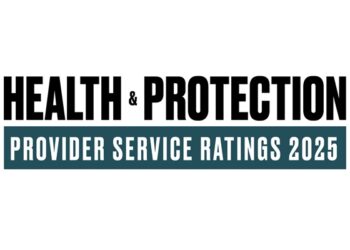Insurers need to up their game in compiling product target market statements as they are too broad and vary widely in terms of detail, but so too should the Financial Conduct Authority (FCA) in its guidance on how to put these statements together.
This is the message from advisers Health & Protection spoke to after the FCA singled out target market statements from private medical insurance (PMI) and income protection (IP) products as “examples of poor practices that could cause customer harm” in its TR24/2 Product Oversight and Governance thematic review – General Insurance and Pure Protection paper yesterday.
No mention of exclusions
“We’ve all had to do our Consumer Duty reports one year in and I actually mentioned target market statements in our report,” Andrew Wilkinson, director at Moneysworth, told Health & Protection.
“The target market statements and fair value statements are not identical between the different providers, but what I would say is to a large extent most of what we see is they make no mention of exclusions, of people who wouldn’t be able to get the product.
“You might make a statement saying something like the target market for this product is everyone between the minimum and the maximum age for entry to the product.”
Too general
Wilkinson maintained that some target market statements are too general.
“When you read them they implied that anyone that applied under those criteria would be accepted,” Wilkinson continued. “I was thinking what about the over 60s then for IP? Because nobody offers IP to anyone aged over 60.
“And what about things like you can’t get IP of you have had a heart attack or heart disease.
“I understand something like 1.4 million people have had a heart attack in the UK and survived and so it’s been a bugbear of mine for a very long time that really I think people like that who are working and still have a mortgage, most of them ought to be able to get some sort of IP – even if it’s got an exclusion for absence from work due to a heart condition, it would still be better than nothing.
“There is this problem of product gaps where it just not the fact that people can’t get cover for the condition they’ve got, it’s the fact that they can’t get cover full stop.
“So you’ve had a heart attack, what if you get cancer and you can’t work? For me, that doesn’t seem particularly fair and it is something I expect to see addressed by insurers.”
Huge array of different approaches
Emma Thomson, chairwoman of Women In Protection Network, told Health & Protection there is a “huge array” of different approaches from insurers on target market statements.
“There’s very little consistency. I’d like to see some consistency over what has to be included in target market statements,” Thomson said.
“You had some insurers that were very detailed about what their product does and is useful for. And then at the other end, I remember reading one statement that was pretty much, ‘this would be suitable for anybody looking for income protection’. It was just so broad and very unspecific.
“I think for me, I would certainly like to see some consistency to make it a lot easier for advisers and the consumers to understand what the product does and who it’s for.”
But Thomson suggested more guidance on putting these statements together could help insurers.
“I think as well maybe there is such an array of approaches from insurers is that they’re not sure what they should be including – so perhaps some tips on what they should be including and not including would be helpful.”
Who are these statements for?
Alan Lakey, director at Highclere Financial Services, told Health & Protection he had always wondered about the point of target market statements.
“Who are they for – advisers or consumers? Any adviser who has trouble assessing which products are suitable for a client really shouldn’t be doing the job,” Lakey maintained.
“If it’s for consumers then the FCA is taking a low level of intelligence approach.”
Lakey added that while it is certainly sensible for insurers to ensure that their products are not suitable, this is a buyers’ market and caveat emptor applies.
“Any product which is deemed ‘unsuitable’ is unlikely to be around for long and history tells us that many such products have been quietly removed from the pantheon of available products,” Lakey continued. “Bright Grey’s cheap mortgage protection product from 2012 or so being one such product where very few sales/purchases were made.”
Lack of clarity
For Kristian Breeze, director of healthcare at Ascend Health, the core issue lies in the clarity and precision of these target market statements.
“All too often, insurers produce statements that are overly broad and/or vague, as the FCA aptly describes,” Breeze said.
“This lack of specificity can lead to a disconnect between the products on offer and the actual needs of the consumers they are meant to serve.
“When these statements fail to clearly define who the product is for—and equally important, who it is not for—they risk misleading customers, who may end up purchasing coverage that is not fit for purpose.
“Insurers must up their game by refining these statements to be more precise and transparent. This includes taking a more rigorous approach to defining target markets based on robust data and insights into consumer needs.
“Instead of generic descriptions, insurers should provide detailed explanations that consider varying customer circumstances, such as age, health status, income level, and lifestyle.
“By doing so, they can better align their products with the appropriate customer segments and avoid the potential for mis-selling.”
Issue for whole industry
But Breeze said it is also for the industry to ensure that these statements are regularly reviewed and updated to reflect changes in the market and evolving customer expectations.
“Static or outdated target market definitions can be just as harmful as those that are overly vague,” Breeze added.
“As the market for PMI and IP products continues to evolve, so too must the statements that guide customers in their purchasing decisions.”
Less woolly reasoning required
Though according to Breeze, while he maintained the FCA’s concerns are valid, there is room for the regulator itself to be more specific and less “woolly” in its reasoning.
“The FCA has rightfully pointed out the risks associated with poorly defined target market statements, but their guidance could benefit from greater detail and clarity,” he continued.
“Insurers would be better served by more explicit examples of what constitutes best practice in this area, as well as clearer benchmarks against which they can measure their own statements.
“By providing more concrete examples and detailed criteria, the FCA could help insurers better understand the expectations and standards they are being held to. This, in turn, would facilitate more effective compliance and ultimately lead to better consumer outcomes.
“The responsibility for clarity and precision should be a shared one, and the FCA has an important role to play in setting the bar.”






